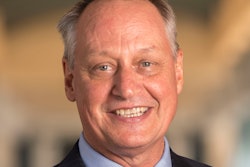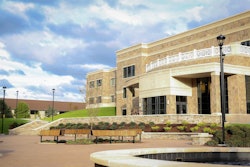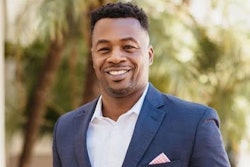As we stare down the double barrel of a global pandemic and historic levels of police brutality inflicted upon Black Indigenous People of Color, we are faced with the reality that neither problem is going away. In addition to massive school closures across the country, many disadvantaged groups—Black families in particular—have suffered disproportionately during these turbulent times. Given that these often-underrepresented minority groups were suffering prior to COVID and the onslaught of police brutality, it emphasizes the fact that something major must be done — and quickly — to enhance the living conditions and educational environments for these communities. While we aren’t responsible for our historical past, we are all accountable for unseen areas. As such, this moment in America demands that we initiate courageous discussions and implement actionable accountability plans to lessen opportunity gaps and pitfalls for populations historically dubbed at-risk.
 Dr. Dennis McCunney
Dr. Dennis McCunneyIn this rush to become anti-racists or abolitionists, it is imperative to self-reflect and determine if we are riding performative waves rather than pushing for substantive change. Are we renaming buildings with no divestment of supremacy and inequality at our institutions? Are we proactively disrupting the status quo in our policies and practices as decision makers at the table? Are we hosting the weight of two pandemics on the back of one single diversity, equity and inclusion officer to satisfy the demand for the appearance of change? Or, are we sharing the responsibility to interrogate and shoulder the shifts this historical moment demands of us?
Residence halls, classrooms, and university communities are situated on the fault line—suspended between two pandemics. Real work makes the fault lines visible to those who might be planning beach vacations and backyard BBQs while others are planning funerals via Zoom. Or, the fault lines lie between faculty working from home and vulnerable front-line staff. The real work gives students a framework to interpret the endless loop of state-sanctioned violence and trace the lines of apartheid from past to present. Just as we learn to diagnose COVID long-haulers, we must also make visible the long-haulers of racial terrorism and oppression.
The risk of real work is real. We will not be able to return to the ‘before times’ of higher education. By refusing to retrofit, rebrand, or reposition the status quo of what was not working for many people, we can see the reward of reimagining higher education, even if it means choosing risk, redesigning, and reckoning. As we process the real work, we must first take accountability for our influences and our own contribution to the phenomenon. The heavy lifting often begins with an honest account of our differences and how our abilities can better shape the norm. The academy has customarily been a space for courageous and controversial discourse. As such, the pandemic season warrants transparency and forward strategies to formulate corrective actions that are deliberate and student-centered.
 Dr. Gretchen Rudham
Dr. Gretchen RudhamHigher education leaders must assume responsibility for spearheading narratives that counter diversity gaps and disproportionate achievement. According to diversity, equity and inclusion experts, strides to increase diverse leadership, faculty, and staff are major priorities in higher education. Holistically, students deserve inclusive environments with diverse administrators and staff who reflect their identities and interests. In sum, collegiate hiring practices are key to establishing intentional processes and guidance for effectively recruiting and retaining stakeholders that reflect differences.
Noticeably, diverse partners are on committees, but not consistently involved at executive levels that determine the direction of institutions. For example, minority influence on college-wide boards, executive leadership, policy committees, accreditation teams, and faculty all demonstrate a commitment to inclusionary practices. In addition, diversity, equity and inclusion officers must be recruited with adequate staffing and a 4 to 5-year plan aligned with institutional and unit-based goals. In addition to meaningful professional development, annual report cards, community involvement, and student input are critical to formulating serious diversity, equity and inclusion plans of action.
Institutions have an opportunity to capitalize on this historic moment by rethinking processes and reimagining what campus culture might look and feel like. As a case in point, one of our institutions has committed to blurring the artificial lines between divisions and promoting meaningful collaboration. The perception that all the heavy lifting should fall on the shoulders of diversity, equity and inclusion officers fades away when everyone collaborates to work in a spirit of partnership. Now, because of limited resources, collaboration is not an option; it has become a must. To build on the preliminary work of our campus-wide diversity committee, regular planning sessions now take place across divisions to pool resources and expertise as well as to identify trends and gap areas in diversity, equity and inclusion programming. In an effort to move away from any sense of territoriality – a phenomenon all too common on university campuses – the guiding question has now become; How can we move this work forward together?
 Dr. Tyson Beale
Dr. Tyson BealeAdditionally, this moment brings opportunities for new doors to open. Intersectionality programming which was once given a simple nod has now become a critical need. New programming on one of our campuses has focused almost entirely on the history of policing, calling attention to tragic examples of brutality through an arts-based format, on the intersection of LGBTQIA* identities and race, and on anti-racism leadership trainings for students and staff. While resources are limited at most institutions, courageous senior leaders are prioritizing funding for diversity, equity and inclusion initiatives through small collaborative grant opportunities, research programs, and engaging speakers. Riding this wave and listening to the moment is a sign of institutional courage and commitment.
One way of embracing one of the aforementioned new doors is actualizing a new normal in education, post-COVID. Along with family incomes being devastated by employment loss during the pandemic, local and state budgets are also pinched. This will affect school budgets in a major way. This poses a crucial challenge. With resources being limited and students attending class virtually, education will need to be reimagined. Additionally, college-wide boards, executive leadership, and policy committees will have to address the pressing needs among students today. Mental health advocacy, technological access, and strong emphasis on learning strategies in online environments will need to be on top of the agenda of educational leadership. This is indicative of the real work it will take to move this work forward together. Where we currently stand in history may have caused our priorities in education to shift, there indeed remains great purpose, potential, and value to be extracted in higher education.
Dr. Gretchen Rudham is an assistant professor of Urban Educational Leadership in the School of Education and Urban Studies at Morgan State University.
Dr. Tyson Beale is founder and creator of PathwaysFWD.com. PathwaysFWD provides educational consultancy services for colleges and industry stakeholders.
Dr. Dennis McCunney is director of intercultural affairs at East Carolina University.
Dr. Adriel A. Hilton is dean of students and diversity officer at Seton Hill University.





















